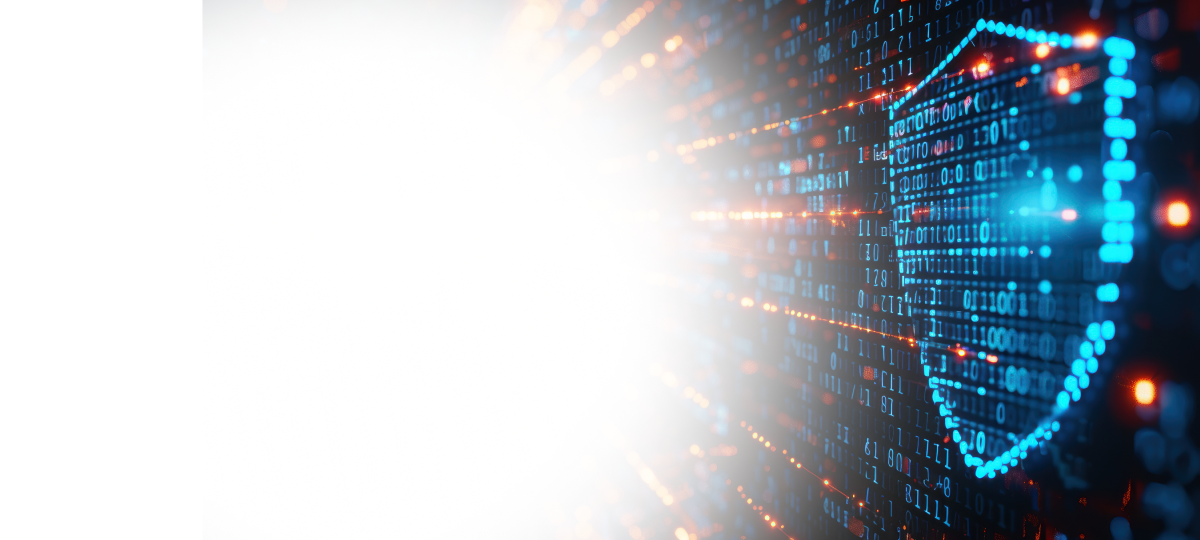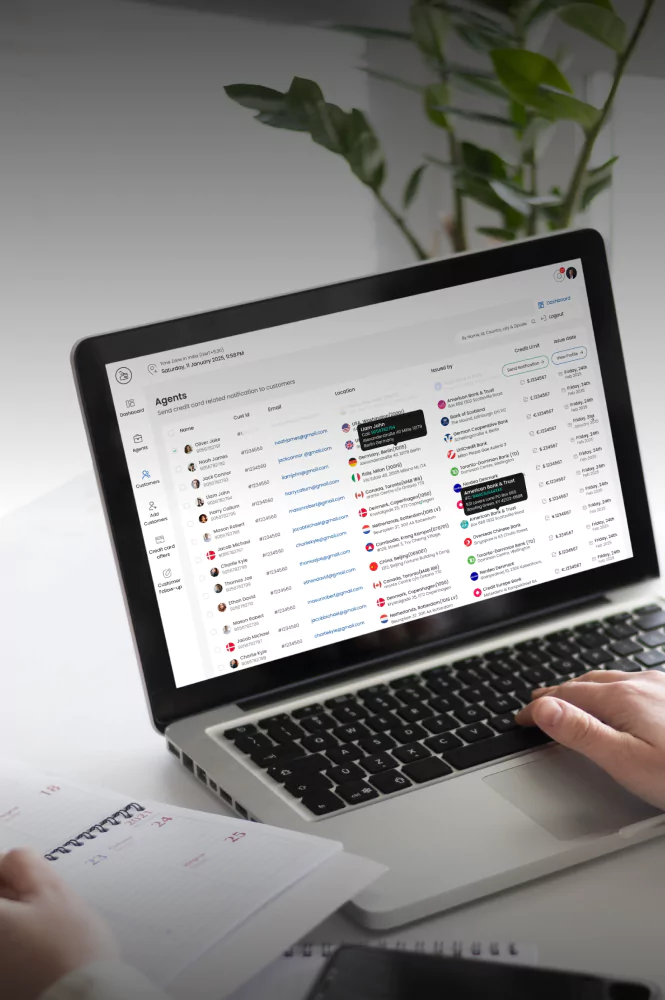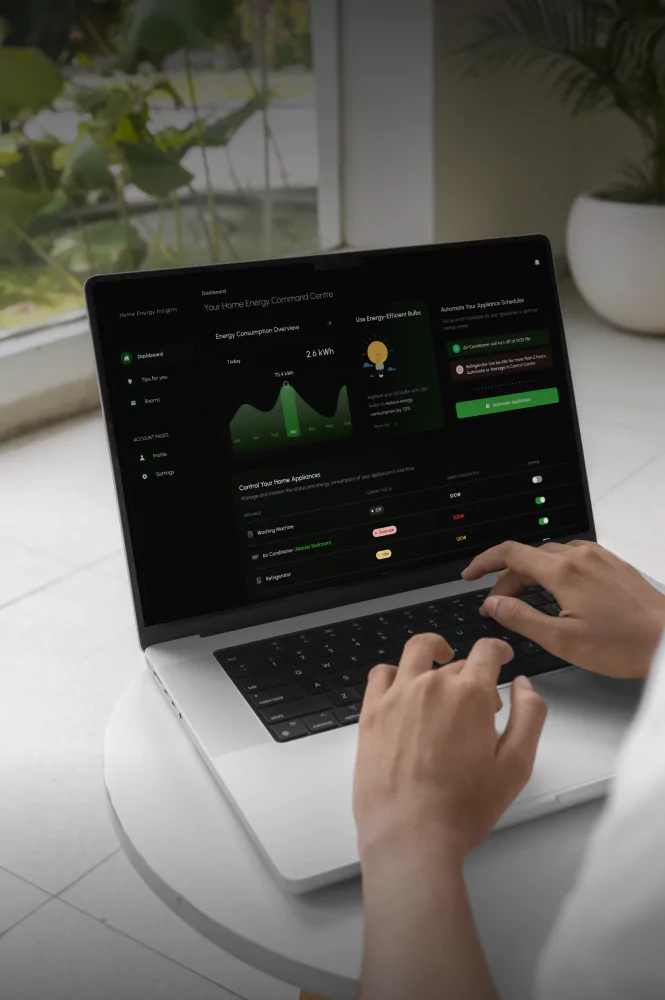
Data security services
Protect sensitive data from unauthorized access, speed up incident response,
and mitigate compliance and financial risks with our data protection services.
Our security specialists will identify and eliminate critical vulnerabilities in your security processes.
Data security services Yalantis provides
-
Access control and identity management
- Designing data governance and data ownership rules
- Implementing role-based, data-centric, or context-centric access control
- Integrating multi-factor authentication into existing software
- Developing identity management policies and selecting appropriate tools
- Setting up access logging, alerts, and reporting with the help of data security and protection experts
-
Data encryption and tokenization
- Selecting the appropriate encryption or tokenization protocol
- Protecting sensitive data in databases, files, and applications
- Adding or optimizing data encryption or tokenization algorithms to an application
- Setting up centralized key management
- Protecting personally identifiable information and payment data with tokenization
-
Data anonymization
- Applying data anonymization methods (data masking, generalization, swapping)
- Securing de-anonymized data with encryption
- Generating synthetic data
- Selecting the right anonymization techniques to meet privacy-related legal requirements
-
Security compliance and risk management
- Identifying the scope of applicable regulatory requirements and cybersecurity standards
- Aligning processes and infrastructure with security standards (ISO 27001, SOC 2, etc.)
- Ensuring compliance with data privacy regulations and laws (GDPR, CCPA, HIPAA, etc.)
- Facilitating compliance via custom compliance training programs
- Identifying, prioritizing, analyzing, and monitoring security risks
-
Cloud and hybrid security
- Implementing cloud data security posture management
- Setting up encryption and access controls for single- and multi-cloud environments
- Setting up real-time threat monitoring and incident management
- Preventing data loss with backups and disaster recovery
- Implementing automated identity and access management
-
Data backup and disaster recovery
- Setting up regular backups for critical data from cloud and on-premise environments
- Encrypting backups in transit and at rest
- Developing comprehensive disaster recovery protocols
- Auditing and improving existing disaster recovery tools and protocols
-
Data warehouse security
Learn more- Setting up access controls and encryption for data warehouse solutions
- Implementing query and data usage monitoring to identify threats in real time
- Aligning data processes with legal requirements for data retention
- Deploying data repositories to a virtual private cloud
- Leveraging vendor-specific security controls
Technologies Yalantis works with
-
AWS IAM
-
Azure AD
-
OAuth2
-
SAML
-
AWS KMS
-
HashiCorp Vault
-
OpenSSL
-
pandas
-
Faker
-
log storages
-
Grafana
-
ElasticSearch
-
Splunk
Industry-specific use cases Yalantis specializes in

Finance and banking
Protect your infrastructure against data breaches and comply with KYC/AML and data privacy requirements with data security services for financial organizations.


Healthcare
Secure sensitive health data and protect patient privacy with a data security service provider experienced in HIPAA and DEA requirements.


Manufacturing
Safeguard your intellectual property and critical business data with comprehensive protection against data breaches, malware, and ransomware.


Logistics and transportation
Ensure your IoT data is safe with end-to-end data protection that involves data encryption, device authentication, and secure communication protocols.

Our clients’ reviews
Results our data security experts deliver
-
Reduced TCO
Identify cost-saving automation opportunities in your cybersecurity infrastructure while improving your security posture with our data security assessment services.
-
Faster threat response
Halve the response time with real-time data estate monitoring, incident alerts, and automated initial response.
-
Mitigated security risks
Prevent reputational damage and financial losses with proactive threat management, robust data governance, and best-suited encryption and access controls.
-
Full regulatory compliance
Instill confidence in data safety among your customers and avoid non-compliance issues with Yalantis experts well-versed in HIPAA, GDPR, PCI DSS, ISO 27001, SOC 2, and CCPA.
Why choose Yalantis’ data protection services
End-to-end cybersecurity services
Our expert data protection team can audit and improve your current security infrastructure or develop and implement data security protocols from scratch.
Industry-specific expertise
Our team includes data security specialists with experience in solutions for finance and banking, healthcare, manufacturing, and energy and utilities.
Continuous maintenance and support
You can focus your internal resources on your business objectives while we ensure your systems remain secure with regular audits, updates, and continuous monitoring.
Perfect alignment with your business objectives
Whether you seek to ensure compliance or reduce cybersecurity TCO, we’ll leverage our data security expertise to help you attain your goals.
Insights into our cybersecurity expertise

Security best practices for web and mobile app development
Application security is crucial. Learn how to apply security best practices at each stage of application development to protect your application.

An enterprise data governance framework: Solve your biggest challenges with data security, quality, compliance
Is data chaos costing your business growth and innovation? Discover how to tackle data challenges around security, consistency, quality, and compliance with a single solution.

Data lifecycle management (DLM): Key stages, tools, and compliance
Find out how to optimize business decision-making by implementing an insightful BI solution that involves fine-tuning your data lifecycle and establishing robust data management practices.
FAQ
How do your services align with our existing infrastructure and workflows?
We take a deep dive into your existing infrastructure and system architecture, applicable regulatory constraints, and business objectives and processes at the beginning of the project. This comprehensive discovery allows us to pinpoint the best-suited data security measures and tools for your specific case.
How fast can you detect and respond to security incidents?
With real-time threat monitoring and automated incident management, incident detection and the first response can be virtually immediate. Thanks to these automations, your cybersecurity infrastructure will be able to detect and respond to incidents around the clock. Discuss your security monitoring and response needs with our security experts to see how we can meet them.
Do you offer ongoing support and monitoring after implementation?
Yes. As a data protection services partner, we can provide continuous support and monitoring for your cybersecurity infrastructure. In this capacity, we’ll deploy security updates to your systems, monitor threats and respond to incidents, and conduct regular security testing and audits.
What industries do your data security services cover?
We provide data security and protection services for organizations in finance and banking, healthcare, energy and utilities, transportation and logistics, and manufacturing. Our industry-specific experience allows us to easily ensure compliance with applicable regulations, standards, and laws.
Can you secure both on-premise and cloud-based environments?
Yes, our security expertise spans both on-premises and cloud-based environments, including hybrid and multi-cloud infrastructure. We’ll ensure your security measures remain consistently strong across all environments, from access controls and encryption to authentication. We can also help you protect your legacy systems and secure your data during migration.
How do you ensure compliance with privacy regulations?
At the beginning of our collaboration, we identify all the applicable privacy rules, standards, and regulations based on your jurisdiction and industry. We then conduct a gap analysis and select the most appropriate data privacy measures to bridge the identified gaps. These can include data minimization, data anonymization, and consent requests for data collection and processing.
Contact us
Tell Us About Your Project & Get Expert Advice

got it!
Keep an eye on your inbox. We’ll be in touch shortly
Meanwhile, you can explore our hottest case studies and read
client feedback on Clutch.

Lisa Panchenko
Senior Engagement Manager
Your steps with Yalantis
-
Schedule a call
-
We collect your requirements
-
We offer a solution
-
We succeed together!













